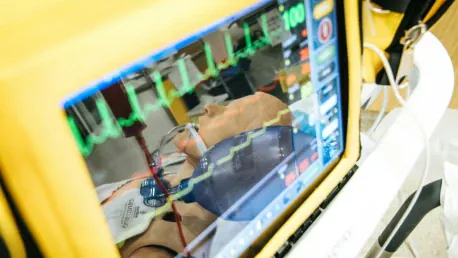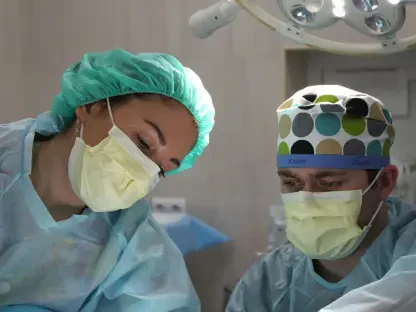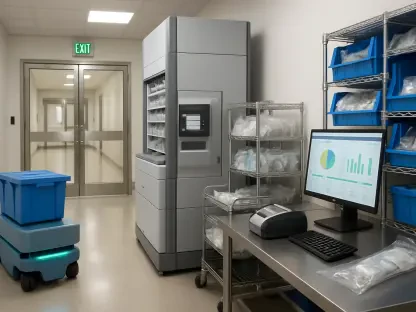Recent trends in medical technology reveal an interesting yet concerning development: the increase in medical device recalls. As innovations flood the healthcare market, the emphasis on patient safety has never been higher. February’s recalls, as meticulously recorded by the FDA, provide a snapshot of these concerns. The recalls span various severities, from Class III (least severe) to Class I (most severe), highlighting potential risks of serious injury or death. The month saw 12 new recalls and one early alert, underscoring ongoing efforts to safeguard patient well-being. These incidents compel a closer examination of whether the rising number of recalls signals growing patient safety concerns.
One common thread in these recalls is the potential for severe patient harm due to device malfunctions. For instance, Biosense Webster’s ablation catheter was suspended following reports of strokes, while Medline Industries faced issues with arterial catheters because of material defects. Similarly, Sentec/Percussionaire’s breathing circuits malfunctioned, impeding ventilation. These scenarios represent just a fraction of the risks associated with defective devices. Significant harm is at stake, emphasizing the importance of a vigilant and responsive approach to medical device management. Given the gravity of these issues, it’s critical to understand the mechanisms driving recalls and the implications for patient safety.
Severity and Types of Recalls
Medical devices subject to Class I recalls, classified as the most severe, pose a high risk of causing serious injury or death. Such recalls often involve malfunctions that compromise the core functionality of the device. For example, Max Mobility and Permobil’s power assist devices issued a recall because of unpredictable malfunctions. Similarly, Medtronic Neurosurgery’s pressure monitoring systems had potential leaks leading to infection, and Olympus’s endoscope instruments had parts dislodging inside patients, causing severe injuries. These recalls underline the potentially lethal outcome when medical devices fail, necessitating immediate corrective measures and vigilant monitoring by both manufacturers and regulatory bodies.
Class II and III recalls, although considered less severe, also bring significant risk to patient health. Devices that fit this category often exhibit defects that might cause temporary health issues or limited exposure to potentially harmful situations. For example, a recall might be initiated because of mislabeling or smaller structural weaknesses that could lead to long-term problems if not addressed. These recalls emphasize that while the risk might not be immediately life-threatening, the potential for long-term harm exists. Consequently, the timeline for intervention in these cases might be more forgiving, but the need for resolution remains critical to ensure patient safety and trust.
Addressing Patient Safety Proactively
Beyond the immediate act of issuing recalls, it is essential to recognize the measures manufacturers and regulatory bodies undertake to prevent recurring issues. It is noteworthy that many companies have not reported injuries or deaths alongside their recalls, which suggests numerous actions are precautionary. Baxter Healthcare and Abiomed, for instance, enhanced device instructions to mitigate future complications, while ROi and Jiangsu Jumao X-Care proactively retracted defective products to curb potential hazards like fires. These steps indicate an industry-wide commitment to patient safety that extends beyond mere legal compliance, instead fostering an environment where patient health is the uncompromised priority.
Recalls also shed light on the robust mechanisms in place for risk management and timely interventions. The swift response from manufacturers in conducting recalls exemplifies a well-oiled system dedicated to minimizing the risks associated with faulty devices. By updating operating instructions for Philips’ patient tables or addressing potential issues in newborn kits, including specific resuscitators, companies illustrate their operational readiness to address and rectify issues preemptively. Such proactive measures showcase an industry committed to evolving and adapting to new information and emerging risks, thereby safeguarding patient interests and public health.
Regulatory Mechanisms and Industry Commitment
One critical aspect highlighted by the recent recalls is the interplay between regulatory bodies, such as the FDA, and manufacturers in ensuring device safety and efficacy. Stringent regulatory mechanisms play a vital role in identifying and addressing potential threats before they escalate. The FDA’s active role in monitoring, assessing, and communicating recalls demonstrates its dedication to maintaining high standards of patient care. By enforcing rigorous guidelines and requiring thorough post-market surveillance, the FDA helps ensure that consumer confidence in medical devices remains intact. This vigilant oversight is crucial in an industry characterized by continuous innovation and technological advancements.
Equally significant is the commitment of manufacturers to respond effectively to regulatory scrutiny while prioritizing patient well-being. Companies like Abiomed, Baxter, and Philips have shown responsiveness by updating device protocols, enhancing safety features, and recalling defective units. These actions underscore an overarching theme within the medical device industry: a steadfast dedication to risk management and patient safety. Despite the challenges inherent in developing advanced medical technology, the industry’s proactive efforts to identify, address, and rectify issues speak volumes about its commitment to maintaining a robust and reliable healthcare system.
The Future of Medical Device Safety
Recent trends in medical technology reveal a concerning rise in medical device recalls, signaling increased focus on patient safety. With healthcare innovations flooding the market, safety has become paramount. February’s recalls, meticulously documented by the FDA, highlight this issue, ranging from Class III (least severe) to Class I (most severe), with potential risks of serious injury or death. Twelve new recalls and one early alert in February underscore efforts to ensure patient safety and necessitate scrutiny about increasing recall numbers.
Common among these recalls is the potential for severe harm due to device malfunctions. For example, Biosense Webster’s ablation catheter was halted after stroke reports, Medline Industries faced arterial catheter issues from material defects, and Sentec/Percussionaire’s breathing circuits malfunctioned, hindering ventilation. These scenarios, part of the broader problem of defective devices, underscore the need for vigilant medical device oversight. Understanding the drivers behind recalls and their impact on patient safety is crucial, given the substantial risks involved.









